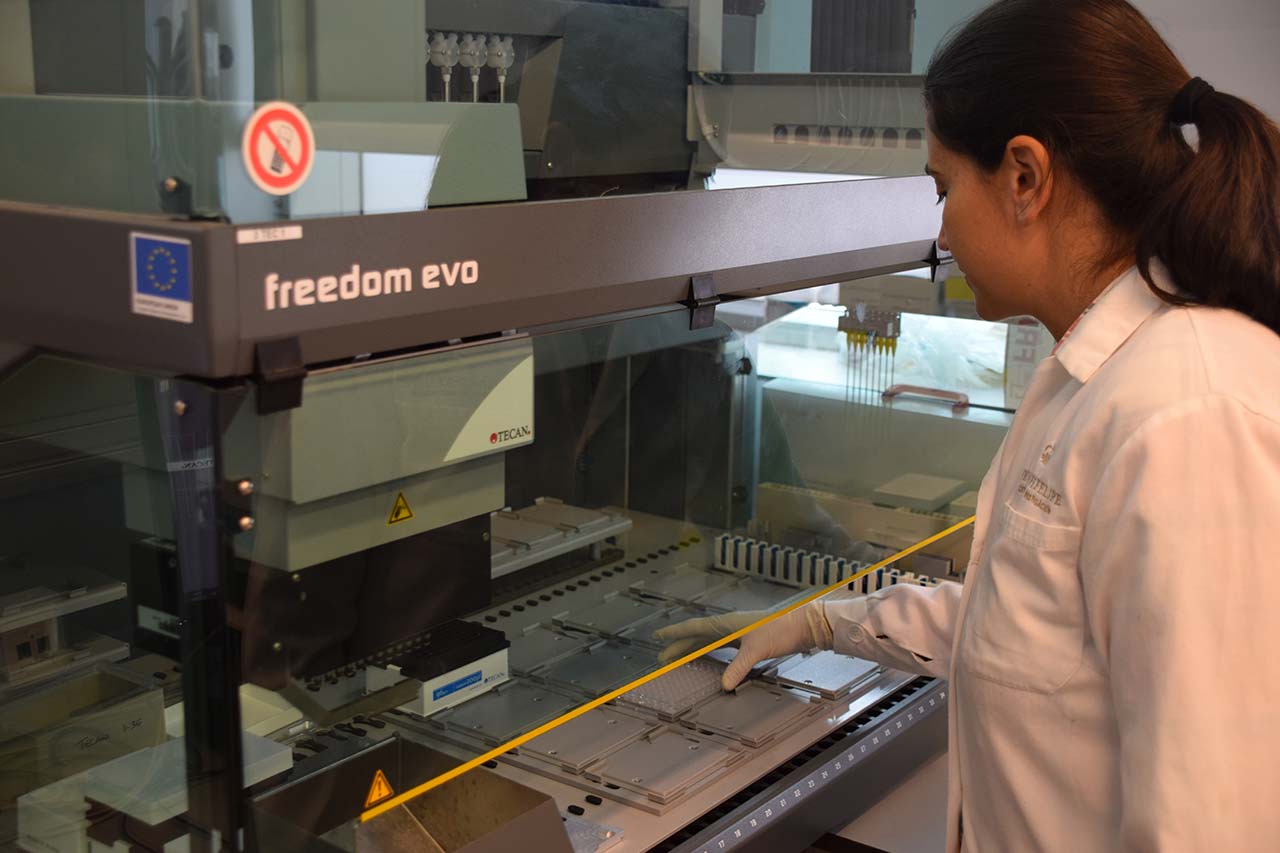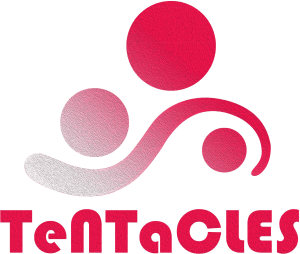
Screening Platform
Scientific head of the service: María Jesús Vicent
The CIPF Screening Platform Service was created to support the evaluation of biological and pharmacological compound libraries—whether in-house at the CIPF or from external entities. This service has created two chemical compound libraries (Myriad and Prestwick), which combined, contain more than 11,000 compounds. The Myriad library is especially valuable for the discovery of new drugs, while the Prestwick library includes compounds already in commercial use. The latter may have undiscovered therapeutic targets, either individually or in combination, that could bring the goal of personalized therapies one step closer.
The Screening Platform Service’s outstanding achievement is the generation and maintenance of compound collections with such high chemodiversity. One of their main goals is to obtain, identify, and characterize novel bioactive agents that modulate protein–protein and/or protein–RNA interactions. Understanding these key elements may, for instance, promote the development of proliferation and differentiation assays that use adult or embryonic stem cells to target human pathologies.
The availability of the Myriad and Prestwick compound libraries allows experiments to be scaled up for massive high-throughput screening (HTS) assays so that the compounds with the highest activity against therapeutic targets of interest can be selected. Once compounds of interest are identified, the service helps researchers to develop them further, according to the specific research goals. For example, by creating transport systems (polymer conjugates) that will improve the solubility of the active compound or increase its half-life in the bloodstream so that its bioaccumulation in tumors or inflammatory sites will be higher, etc.
The service can automate the direct capture of results from reading systems and is able to perform data processing in high-density sample testing. Furthermore, the tests have been tuned to identify compounds that modulate protein–protein interactions or which promote the proliferation and/or differentiation of embryonic and adult stem cells.
In 2019 significant advances have been implemented, including a translatable approach to the screening of exosome biogenesis/release inhibitors that avoids the requiremnt for time-consuming techniques, improves the identification of exosome modulators with specific molecular mechanism, and facilitates translation to clinical practice and routine laboratory use.
Scientific Networks
- Equipment and Resources
- Services
- EvoTECAN Freedom Robot automatic pipettor which can be used to conduct massive screenings in 96-well and 384-well plates.
- Multiplate reader ClarioStar with AlphaScreen technology and atmospheric control from BMG LABTECH.
- Multiplate reader Ensight with Label-free technology from PerkinElmer.
- NanoSight-NTA NS300.
- Myriad and Prestwick Libraries.
- Fully-equipped cell culture room.
- Dedicated molecular biology space for studying specific molecular mechanisms (e.g., for western blots, PCRs, etc.).
- Fully-equipped chemical synthesis laboratory.
In many neurodegenerative disorders or aggressive pathological processes such as cancer, pharmacological high throughput screening (HTS) approaches are required to identify novel effective and safe therapeutics. Our screening site, using complementary advanced technologies including label-free, alpha-screen, and imaging tools among others, can rapidly and reliably identify novel hits. The CIPF is a specialized site offering a diversity of cell-based assays, from commercially available cell lines to patient derived 3D models. Assays on organotypic cultures are also available for screens. The Screening Platform also helps researchers to develop compounds of interest, according to their specific research goals, and so they offer several services:
- Cell culture:
- Human eukaryotic cells, either in 3D and 2D models.
- Primary cell cultures, including stem cells and patient-derived cell models.
- Molecular biology assays.
- Protein–RNA interaction analysis.
- Enzyme activity and competition studies including detection by polarized fluorescence.
- Hypoxia-inducible factor (HIF) activity.
- Detection and quantification of protein expression:
- Western blotting.
- Flow cytometry.
- Immunocytochemistry.
- RNA and DNA techniques including RT-PCR, quantitative PCR, and semi-quantitative PCR.
- Telomerase activity analysis.
- Antioxidant activity analysis.
- Anti-aging activity analysis (screening and cytomics services).
- Nuclear translocation of transcription factors (e.g. NFKB) (screening and cytomics services).
- Viability–toxicity tests:
- MTT assay.
- MTS assay.
- ATP assay.
- Assays complementary to the cytotoxicity assays:
- Cell cycle.
- Apoptosis.
- Mitochondrial membrane-potential assays (screening and cytomics services).
- Full histological processing for work with experimental animals (from tissue and organ separation to sectioning and slice staining).
- Setting up high-density format tests.
- Statistical validation of experiments.
- Massive screening of the compound libraries.
- Secondary evaluation of the selected positive results.
- Intellectual property research:
- Use of the compound by competitors.
- Initial data about the compound novelty for use in intellectual copyright protection.
- Development of medicinal chemistry (‘hit to lead’ drug discovery).
- Development of transport systems (polymer conjugates) for the selected compounds of interest.
- Validation of biological activity in animal models.
- Characterization of external compounds.
- Particle characterization (size and quantity).
Ask the Screening Platform Service about your project:

Esther Masiá
cribado@cipf.es
963289680 ext. 2308




